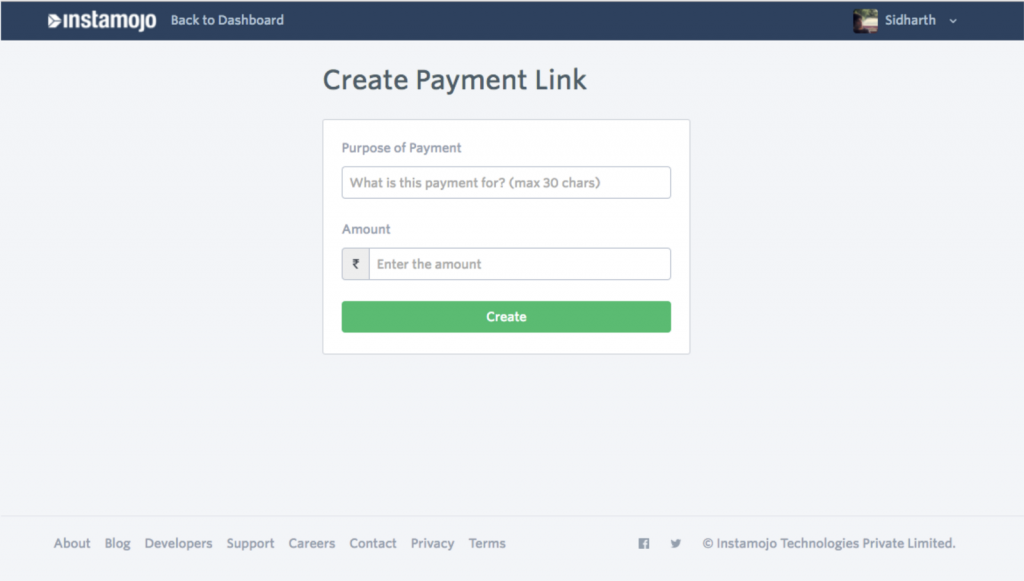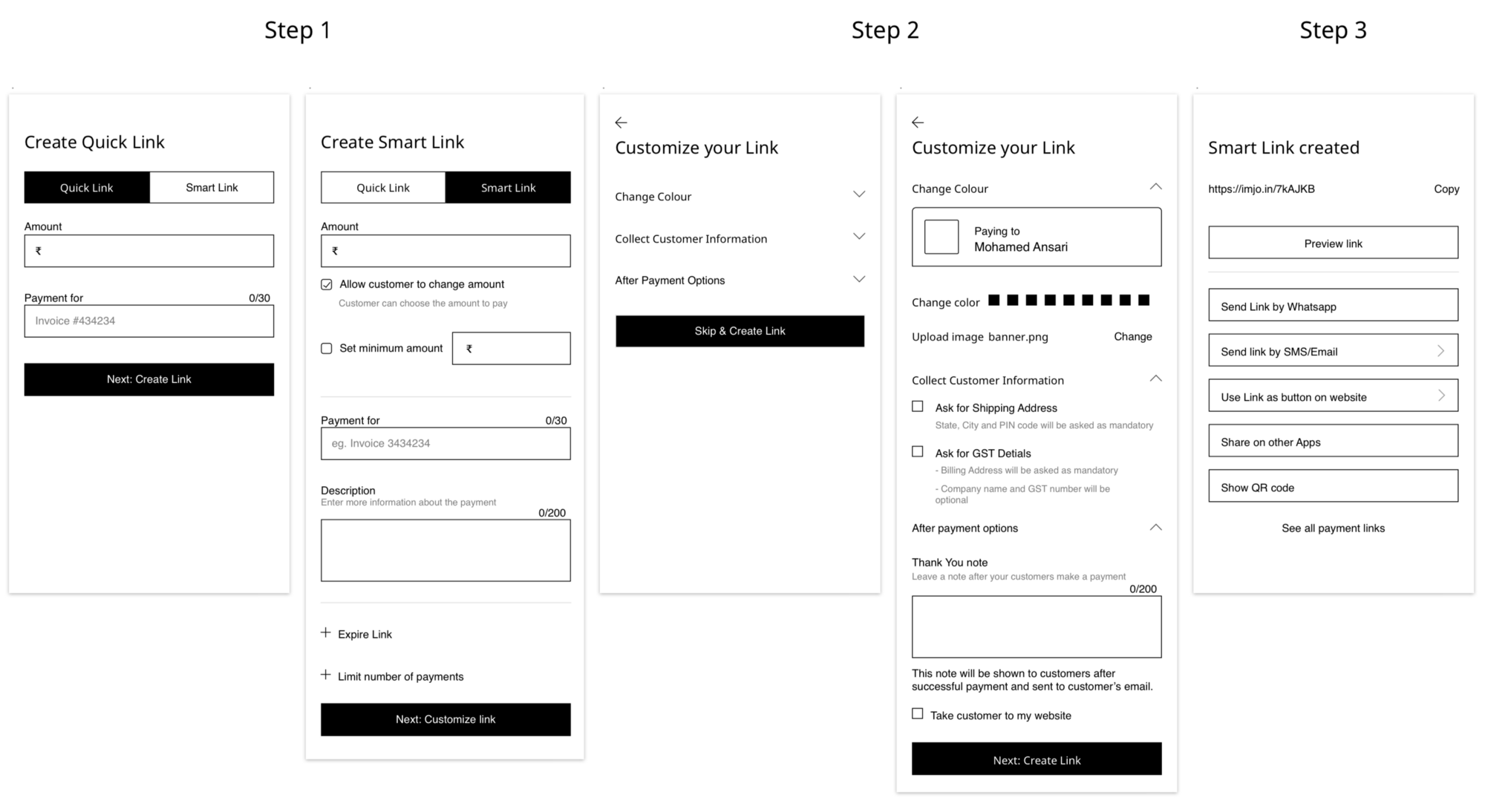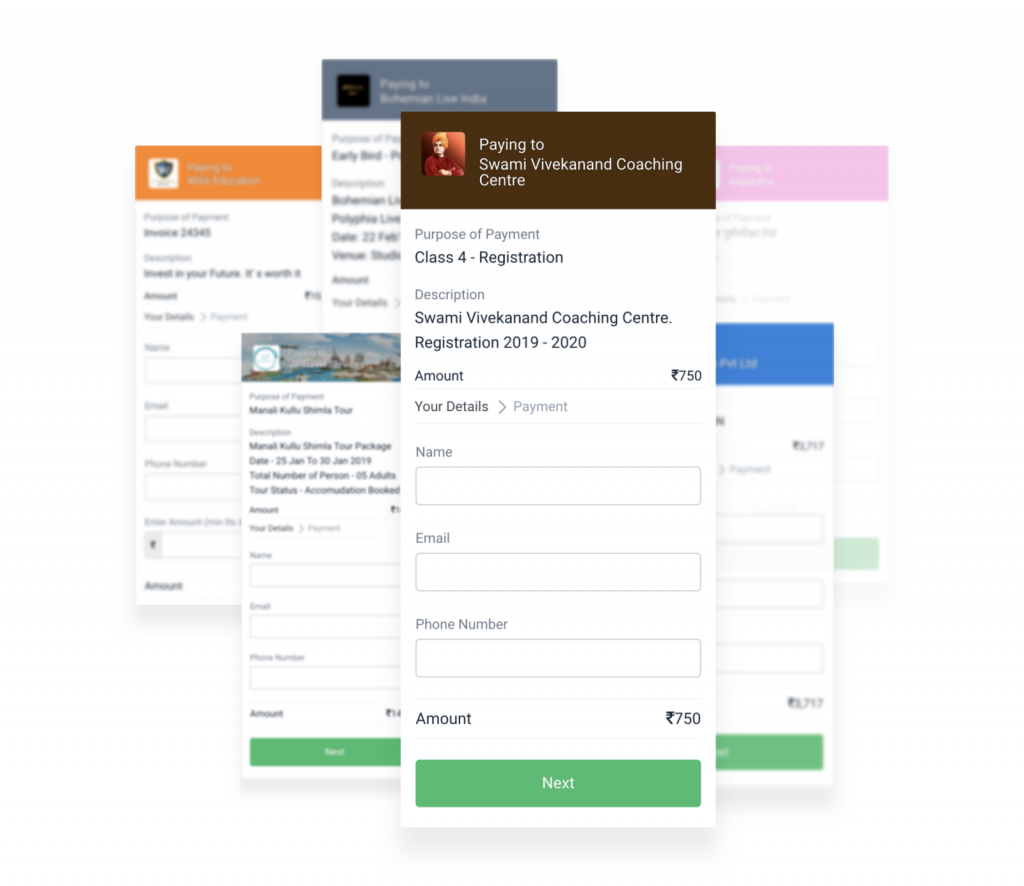Ask any seller on the Instamojo platform what a Smart Link is they won’t be able to describe it. But ask them how they collect payments on Instamojo and they will tell you about what we, at Instamojo call Smart Links.
What is Instamojo?
Instamojo is an online platform that allows anyone on the internet to collect payments with a simple, shareable link. Sellers collect payments by sending a Payment Link to their customers.
Instamojo also offers a free Online Store to sell products and offers simple payment API integrations for sellers with a website.
What are Payment Links?
Sellers can create Payment Links from the dashboard. It is a simple form where they input the “Purpose of Payment” and “Amount”. This Link is then shared with customers who make the payment using their choice of online payment options like credit card, debit card, net banking, UPI, etc.

Instamojo Payment Link
What is Instamojo Smart Links?
A simple payment link was functional but our sellers wanted more. Especially, service sellers.
Service sellers were creating products on the Instamojo store and using it as a Payment Link. This was because Payment Links have limitations:
- The “Purpose of Payment” is just 30 characters long.
- There is no way to describe the service or the product for which the payment is being made.
- No option to add images.
- The payment amount cannot be changed by the customer.
This encouraged us to delve deeper.
Talking to our Users (Sellers)
We wanted to find out what was frustrating the users. What did they want? What did they need? Were they figuring out hacks to get around the limitations of the links?
It was not practical to gauge user behavior without understanding how they exclusively used Instamojo payment links and product pages.
Just picking up the phone and calling them randomly didn’t work either. Their reply to our calls went something like…
Kaam ki baat bolo Sir, ye dhande ka time hai.
Getting the sellers to talk to us was a rather difficult task.
This prompted us to try a different approach. We sent them a survey with an option to leave their phone number. This worked well for us. We got more sellers to talk to us and for longer.
Here is what we learned from talking to the Instamojo sellers:
- Businesses want to give customers more information about the product/service they are selling.
“I sell services by making products on the online store so that the customer can get more information about the service.” — Instamojo seller.
“My students want to see more information about the course they are paying for.” — Instamojo seller.
“I send a breakdown of the payment in an email and attach the Payment Link there.” — Instamojo seller.
- Businesses need to collect customer information.
“Once the payment is made, customers send me their shipping address via SMS or Whatsapp.” — Instamojo seller.
“Customer sends me their GST information so that I can make the invoice for the payment.” — Instamojo seller.
- Businesses need more control over Payment Links.
“I conduct workshops and have a fixed batch of students so I need to control the number of students paying on the Link.” — Instamojo seller.
“I need to sell early bird tickets, so I need to expire the Payment Link on a particular date.” — Instamojo seller.
- Businesses want to create an impression on their customers.
“I want to make a good impression on my buyer by looking professional while collecting payments.” — Instamojo seller.
“I want the Payment Link to look more like my website.” — Instamojo seller.
“I want to customise branding on the payment link page because customers get confused with different branding and do not trust the payment method.” — Instamojo seller.
- Businesses want to let customers choose the payment amount.
“Sometimes my customer wants to pay only a certain amount so I make a new Payment Link for them.” — Instamojo seller.
“I just use the Default Payment Link (link with editable amount) so that my customer can enter the amount they want to pay themselves.” — Instamojo seller.
“We use the Default Payment Link for donations but cannot set a minimum.” — Instamojo seller.
Interaction Design
It was clear that there were a number of things the sellers were doing to get their work done. Even when regular payment links failed to meet their needs.
We decided to create a new “Smart Link” to cover the most common use-cases.
We could come up with several features but we didn’t want to overwhelm the seller. Therefore, we decided to prioritise.
We divided the “Smart Link” into 3 steps:
Step 1:
Features that have a bigger business impact took first priority.
For eg: A business runs the risk of overselling inventory without automatically expiring payment links.
Step 2:
Features like collecting additional customer data, changing the colours, were optional. It doesn’t have a drastic impact on the business itself and the sellers can choose to skip this step.
Step 3:
The third step would enable the sellers to use and send the Link on various online platforms.

Validation and Insights
Smart Links adoption was better than we expected. About 10% of our active user base adopted Smart Links within 90 days from the launch.
We decided to call up users who used Smart Links on a regular basis. Here is what they had to say:
“It is nice to thank people after they make a donation.” — Instamojo seller.
(42% of all Smart Links have a thank you note.)
“I have to give the details of the travel package to the customer so I use the Smart Link.” — Instamojo seller.
(27.9% of Smart Links have a description.)
“I sell exclusive products so my offer is time-bound plus I can get the customer’s shipping address too.” — Instamojo seller.
(19.7% of all Smart Links collect Shipping address and 19.5% expire based on time.)
“I redirect my students to a registration form after they make the payment.” — Instamojo seller.
(20.7% of Smart Links redirect the customer to a different page.)
Even some API users started using Smart Links, although they can implement these features easily on their end.
Here is what they had to say:
“I use Smart Links, my tech team uses the API.”
“I want to give loyal customers discounts, so I send them a Link.”
“Some customers find it difficult to pay on the website so I just send them a Link.”
The icing on top?
Many users were not aware that they were using a “Smart Link”. To them, these features were obvious and the complexity behind them, invisible.


